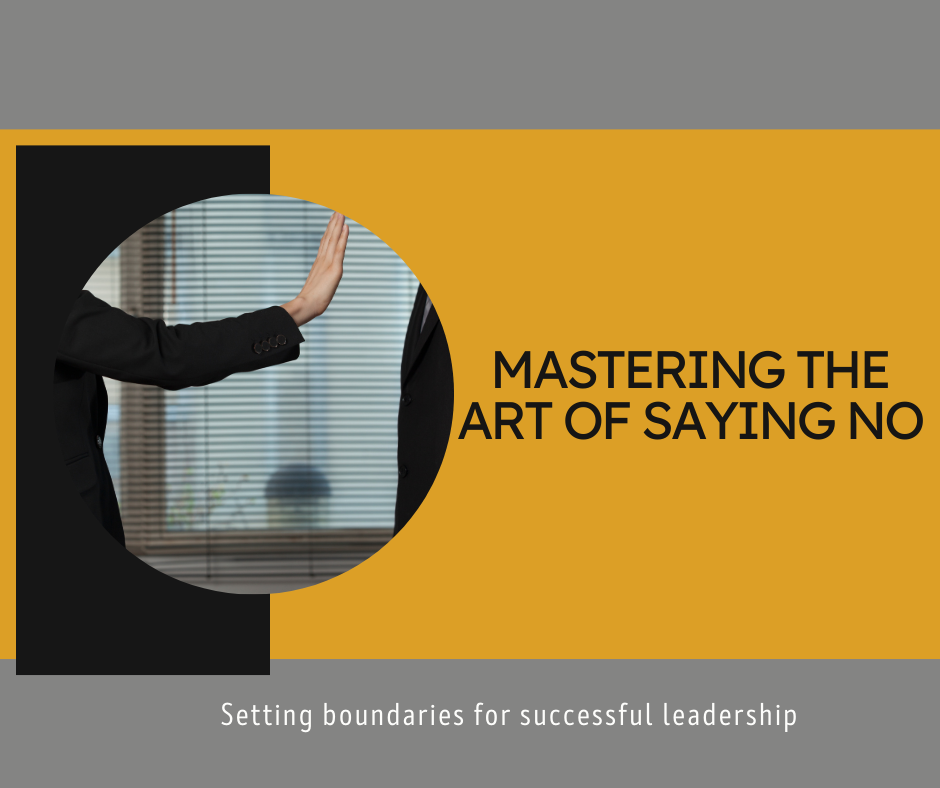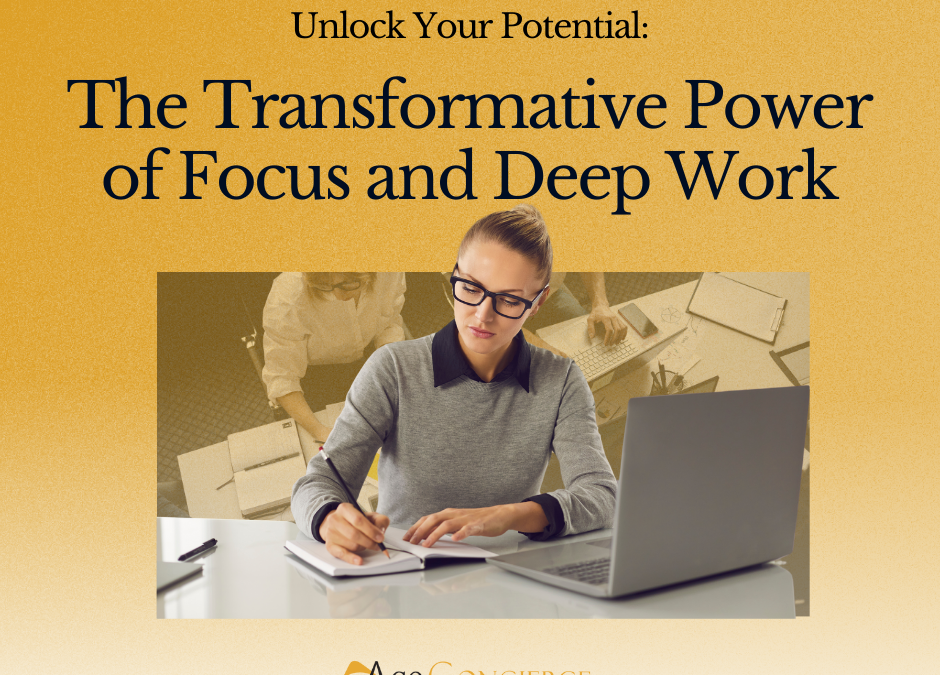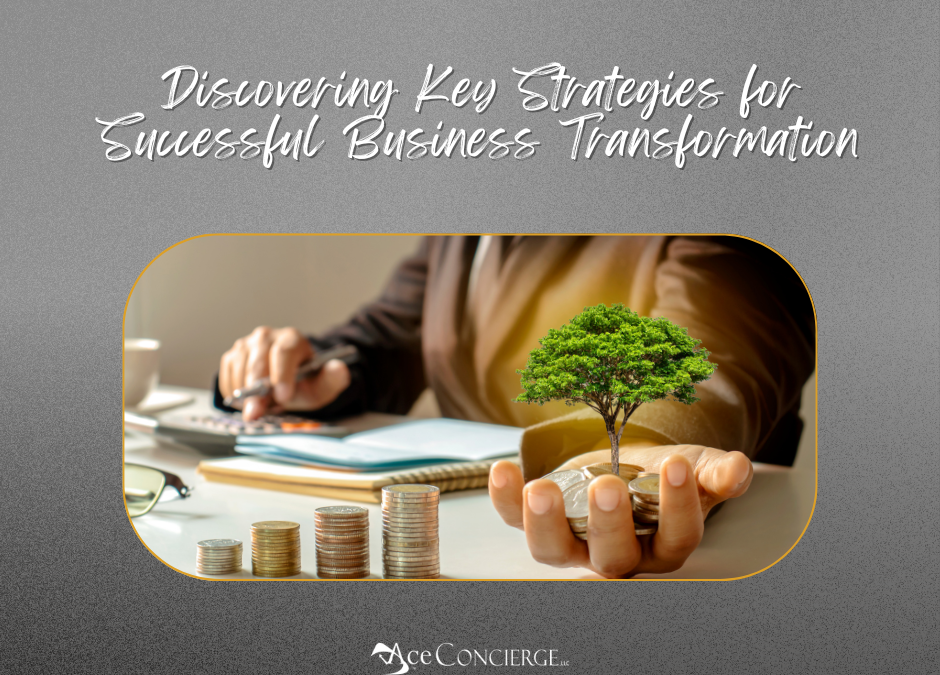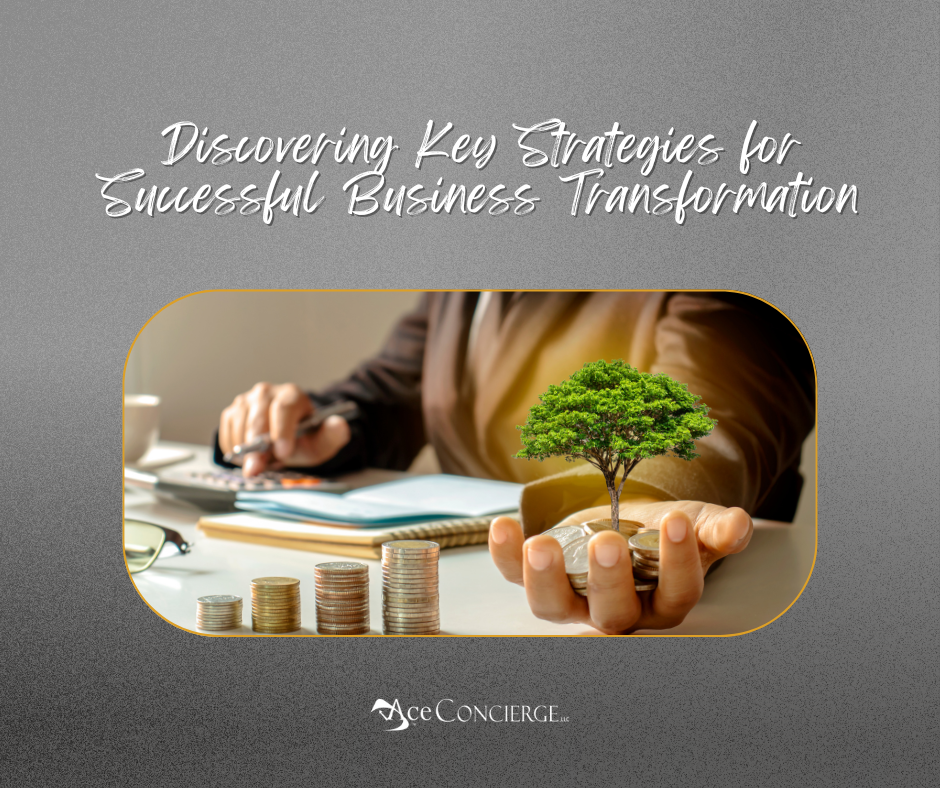
by Ace Concierge | Virtual Assistant | Jan 7, 2025 | Business Transformation, Leadership, Small Business

Organizations are always looking for ways to improve efficiency, uphold quality, and ensure consistency in their operations. One effective tool that has shown to be essential in reaching these objectives is the Standard Operating Procedure (SOP). SOPs are comprehensive, written guidelines describing how to carry out specific organizational tasks or processes.
The Strategic Value of Standardization
While SOPs may appear straightforward, their influence on operational effectiveness can be significant. They are strategic blueprints that capture institutional knowledge, optimize workflows, and create a foundation for consistent performance. Unlike generic instructions, well-crafted SOPs serve as living documents that evolve with organizational needs.
Additionally, SOPs can help identify bottlenecks and inefficiencies in existing processes. As procedures are documented and analyzed, organizations often uncover opportunities for improvement that may have been overlooked. Persistent enhancements can lead to substantial reductions in future time and costs.
Operational Efficiency: Beyond Simple Documentation
Consistency is a hallmark of successful organizations, and SOPs are crucial in maintaining it. By establishing standard procedures, companies can ensure that tasks are performed uniformly across different departments, shifts, or geographical locations. They provide:
- Clear, unambiguous task instructions
- Systematic approach to complex processes
- Reduction of human error
- Predictable performance metrics
- Scalable knowledge transfer
Training and Onboarding Reimagined
When joining an organization, new hires often face a steep learning curve, but well-crafted SOPs can ease this transition. By providing clear, step-by-step instructions for various tasks and processes, SOPs serve as valuable training tools that accelerate learning. They revolutionize this approach by:
- Creating structured learning pathways
- Reducing training time
- Ensuring uniform skill development
- Minimizing knowledge gaps
- Supporting continuous learning
Compliance and Risk Management
In many industries, regulatory compliance is a critical concern. SOPs are valuable tools for ensuring an organization’s processes align with industry regulations and standards. They:
- Demonstrate regulatory adherence
- Provide audit-ready documentation
- Establish clear accountability
- Mitigate potential legal and operational risks
- Create transparent performance standards
Knowledge Preservation and Continuity
Organizations often face challenges when key employees leave or retire, taking with them valuable institutional knowledge. SOPs help mitigate this risk by capturing critical information about processes and procedures. SOPs ensure:
- Preservation of critical processes
- Smooth leadership transitions
- Reduced dependency on individual expertise
- Consistent performance, regardless of personnel changes
- Systematic approach to organizational learning
Implementation Strategies
While the benefits of SOPs are clear, their effectiveness depends on proper implementation. Organizations should approach SOP development as an ongoing process, regularly reviewing and updating procedures to reflect technological changes, regulations, or best practices. SOP development requires:
- Cross-functional collaboration
- Regular review and refinement
- Employee engagement
- Leadership commitment
- Flexible, adaptable frameworks
Standard Operating Procedures are essential tools for organizations, serving not just as guidelines but as strategic frameworks that enhance performance and foster growth. By viewing SOPs as adaptable resources, companies can effectively turn challenges into opportunities for innovation and success.
Where there is no Standard there can be no Kaizen. Taiichi Ohno

by Ace Concierge | Virtual Assistant | Jul 1, 2024 | Business Transformation, Leadership

We’ve all heard the phrase “get out of your comfort zone” so many times that it’s almost become a cliché. But there’s a reason this advice persists—it works.
Let me take you back to a sunny afternoon when I was just five years old. I’d been invited to a birthday party, and for an entire week, it was all I could talk about. The day finally arrived, and there I was, dolled up in my best party dress and shiny patent leather shoes, skipping down the street with a wrapped present in hand. But as I approached the house and saw the crowd of people, something inside me froze. In a moment of panic, I threw the gift over the fence and ran home as fast as my little legs could carry me.
Fast-forward to today, and you might be surprised to find me in a very different scenario. Picture this: It’s 6:45 a.m., and I’m making my way to the beach. But I’m not there for a leisurely stroll or a quiet moment of reflection. No, I’m headed to a bootcamp class that starts at 7 a.m. sharp.
I used to avoid group exercise like the plague! Stepping out of my comfort zone was a must. I craved more discipline, structure, and commitment in my fitness journey. It was time to elevate my game, embrace change, and work on healing my long-term injuries.
When I first heard about this bootcamp, every fiber of my being screamed, “No way!” It was quite literally the last thing I ever wanted to do. But something inside me, perhaps that same little girl who once wanted so badly to go to that party, whispered, “What if?”
So, I took a deep breath and signed up. That first morning, as I stood on the beach with a group of strangers, I felt that same urge to run away. But this time, I stayed. And let me tell you, it was the best decision I’ve made in a long time.
As I reflect on this journey, I can’t help but think about that little girl who threw the present over the fence. I wish I could go back and tell her that the joy and growth she seeks are on the other side of that fence, in the midst of those intimidating group activities.
But perhaps it’s better this way. Perhaps we all need to take our own journey from fence-throwing to beach bootcamps, whatever form that might take in our lives. When we finally gather the courage to step out of our comfort zones, we often find that’s where the real magic happens.
This injury-prone introvert now loves group sweat sessions.
What is a comfort zone?
It’s that cozy mental space where you feel safe, in control, and free from anxiety. Sounds nice, right? But here’s the catch—while it feels good, staying there can seriously limit your growth and success.
Think about it. Every significant breakthrough in your life probably came when you did something that scared you a little (or a lot). Maybe it was speaking up in a meeting (my college senior thesis was Fear of Public Speaking), pitching a new idea to a client, or even starting your own business. These moments of discomfort are where the magic happens.
But why exactly does leaving your comfort zone lead to success?
- Goal Achievement: Let’s face it, not everything worth doing is easy. By stepping into your “growth zone,” you’re setting yourself up to accomplish more and reach those ambitious targets you’ve set for yourself.
- Increased Confidence: There’s nothing quite like the feeling of accomplishing something you weren’t sure you could do. This boost in self-assurance can create a positive cycle, encouraging you to take on even more significant challenges.
- Expanded Horizons: Trying new things often leads to meeting new people, discovering new interests, and gaining fresh perspectives. This broader worldview can be invaluable in business, sparking innovative ideas and helping you connect with diverse clients and colleagues.
- Resilience: Each time you face a challenge and come out the other side, you’re building your ability to handle stress and uncertainty. In the ever-changing business world, this resilience is a crucial asset.
- Personal Empowerment: By regularly pushing your boundaries, you gain a better understanding of yourself and more control over your life’s direction. This self-awareness can help you make better decisions and align your actions with your long-term goals.
Now, I know what you’re thinking. “This all sounds great, but how do I actually do it?”
- Set Clear Goals: Choose something specific that is just outside your current abilities. Maybe it’s giving a presentation to a large audience or exploring the intricacies of AI.
- Break it Down: Divide your goal into smaller, manageable steps. This will make the process less overwhelming and allow you to build momentum.
- Embrace Discomfort: Remember, feeling a bit uncomfortable is a sign you’re growing. As Tony Robbins says, “It’s not what we do once in a while that shapes our lives. It’s what we do consistently.”
- Celebrate Milestones: Acknowledge your progress along the way. This positive reinforcement can help keep you motivated.
- Reflect and Adjust: Regularly assess how you’re feeling. If tasks seem too easy, you might need to push a bit harder. If you’re constantly overwhelmed, you may need to dial it back a notch.
It’s important to note that leaving your comfort zone doesn’t mean constantly pushing yourself to the brink. It’s about finding that sweet spot – what psychologists call the “optimal anxiety” level – where you’re challenged enough to grow but not so stressed that you shut down.
This journey from a fence-throwing five-year-old to a beach bootcamp enthusiast isn’t just about physical fitness. It’s about pushing boundaries, facing fears, and discovering strengths you never knew you had. It’s about realizing that growth often lies just outside our comfort zone.
So, here’s my challenge to you:
What’s your “beach bootcamp”? What’s that thing you’ve been avoiding, that opportunity you’ve been too scared to seize?
Maybe it’s time to take a deep breath, lace up your shoes (party or otherwise), and step out onto your own beach.
Trust me, the view from here is worth it.

by Ace Concierge | Virtual Assistant | May 14, 2024 | Leadership, Small Business, Time Management

As a business owner or executive, you are likely familiar with the exhausting meeting marathon. It seems like every day is jam-packed with back-to-back gatherings, each promising to make progress on your most urgent priorities. However, more often than not, you come out of these meetings feeling dissatisfied, unproductive, and questioning where all the time has gone. You are not alone in this struggle. Research shows executives spend an average of nearly 23 hours weekly in meetings, with little to show. A significant 71% of senior managers view meetings as unproductive and inefficient.
So, what is the solution to streamline your meeting schedule and ensure that each gathering is a productive use of your precious time? Let’s dive in.
The Productivity Pitfalls of Inefficient Meetings
Enhancing meeting productivity requires addressing the common obstacles that impede their success. A primary concern is unclear objectives and agendas, which lead to unstructured discussions and distractions. Moreover, inadequate meeting management can result in disorganized debates and lengthy updates. The prevalence of multitasking and the overwhelming frequency of meetings also hinder productivity in the modern workplace.
Strategies for Efficient, Focused Meetings
Now that we’ve identified the common pitfalls, let’s explore some proven strategies for streamlining your meeting schedule and maximizing the productivity of each gathering.
1. Define Clear Objectives and Agendas
The old saying goes, “If you fail to plan, you plan to fail.” Before scheduling a meeting, clearly define the purpose, desired outcomes, and critical discussion points. Distribute a detailed agenda in advance so participants can come prepared and ready to contribute.
2. Designate a Facilitator
Appoint a meeting facilitator whose sole job is keeping the discussion on track, managing the time, and ensuring all attendees can voice their perspectives. This person should be empowered to politely redirect the conversation if it starts to veer off course.
3. Limit Attendees
Resist the temptation to invite everyone and their brother to your meetings. Only include the essential decision-makers and subject matter experts who need to be there. As leadership coach Cameron Herold advises, “If you have more than seven people in a meeting, you’re wasting time.”
4. Leverage Technology
Take advantage of the wealth of productivity-boosting tools at your fingertips. Virtual meeting platforms, collaboration tools, and productivity software can all boost meeting efficiency and engagement. Platforms like Zoom, Google Meet, Microsoft Teams, and Switchboard facilitate remote meetings with features like HD video, screen sharing, and real-time messaging. Project management and note-taking apps help track action items, decisions, and follow-ups. Meanwhile, virtual whiteboards and collaboration software enable more dynamic, interactive discussions.
5. Set Time Limits
Resist the urge to schedule hour-long meetings by default. Instead, aim for shorter, more focused gatherings of 30 minutes or less. If the agenda requires more time, break it into a series of back-to-back sessions with clear start and end times.
6. Follow Up Promptly
Don’t let the momentum of a productive meeting fizzle out. Immediately after the gathering, share a concise summary of key takeaways, action items, and next steps. This ensures everyone is on the same page and accountable for their responsibilities. Implementing these strategies can transform your meeting schedule from a time-sucking slog to a streamlined, high-impact part of your workday.
Maximize Meeting Productivity
Meeting optimization is a topic that can’t be overlooked without exploring the different tools and techniques that can enhance productivity. One effective method is the “stand-up” or “scrum” meeting format, where participants stand throughout the gathering. This promotes brevity, focus, and a sense of urgency. Research has shown that stand-up meetings can be up to 34% shorter than meetings where participants are seated.
Another helpful tactic is the “parking lot” technique, where topics that stray from the agenda are promptly noted and addressed separately rather than derailing the ongoing discussion.
Are you ready to revolutionize your meeting schedule from a dreaded obligation to a valuable productivity tool?

by Ace Concierge | Virtual Assistant | May 8, 2024 | Business Transformation, Communication, Leadership

As a business leader with a hectic schedule, your time is valuable and constantly sought after. Balancing client demands, team projects, and industry obligations can be overwhelming. Failing to establish boundaries and turning down opportunities can result in burnout, reduced efficiency, and a loss of focus on key objectives. Learning to say no is crucial for executives and entrepreneurs looking to regain control of their time and resources. This article will delve into the significance of setting limits, offer tips on politely declining requests, and highlight the advantages of saying no.
The Importance of Setting Boundaries
In today’s always-on, hyper-connected business landscape, it’s easy to feel you need to be available 24/7. The fear of missing out or letting someone down can make turning down opportunities or requests challenging. However, failing to set clear boundaries can severely affect your well-being and your ability to lead effectively.
When you say yes to everything, you spread yourself too thin, leaving little time and energy for the essential tasks and strategic priorities. This can lead to increased stress, diminished focus, and a sense of being overwhelmed and unfulfilled. Ultimately, your productivity, decision-making, and leadership capabilities suffer. According to a survey by the American Psychological Association, 75% of adults reported experiencing moderate to high levels of stress in the past month, with work being a significant contributor. By learning to say no, you can help mitigate the negative impacts of chronic stress and burnout.
Techniques for Politely Declining Requests
Saying no doesn’t have to be aggressive or damaging to your relationships. The right approach can strengthen your professional standing and demonstrate your leadership abilities. Here are some techniques for politely and professionally declining requests:
- Respond Promptly: Don’t leave requests hanging. Acknowledge the request and promptly respond, even if it’s a polite decline. This shows respect for the other person’s time and prevents the situation from dragging on.
- State Your Decision: When declining a request, respond directly and confidently. You do not need to provide a lengthy explanation. A simple statement like “I won’t be able to take this on, but thank you for thinking of me” is sufficient.
- Suggest Alternatives: If appropriate, offer an alternative solution or suggest someone else who may be better suited to the task. This demonstrates that you’re trying to be helpful, even if you can’t directly assist.
- Express Gratitude: Thank the person for the opportunity and let them know you appreciate being considered. This helps maintain a positive relationship, even if you decline the request.
The Benefits of Saying No
Mastering the art of saying no may initially feel uncomfortable, but the benefits far outweigh the short-term discomfort. Here are some of the ways that learning to decline requests can positively impact your business and your life:
- Increased Productivity: You free up time and mental energy to focus on your most critical strategic objectives by saying no to low-priority tasks and commitments. This allows you to be more productive and achieve more significant results.
- Reduced Stress and Burnout: Overcommitting yourself is a surefire path to burnout. According to a study by the World Health Organization, burnout is characterized by feelings of energy depletion, increased mental distance from one’s job, and reduced professional efficacy. Saying no helps you maintain a healthier work-life balance, reduce stress, and avoid the negative impacts of chronic overwhelm.
- Improved Decision-Making: When you’re not stretched thin, you can make better-informed, more thoughtful decisions. This leads to more effective leadership and better outcomes for your business.
By mastering the art of saying no, you can control your time and energy and align your commitments with your highest priorities. This, in turn, can boost your productivity, reduce stress, and make you a more focused, impactful leader.
You have to decide what your highest priorities are and have the courage pleasantly, smilingly, and non-apologetically – to say no to other things. And the way to do that is by having a bigger yes burning inside. Stephen Covey

by Ace Concierge | Virtual Assistant | Apr 24, 2024 | Business Transformation, Leadership

In today’s fast-paced, digitally driven world, it’s easy to feel overwhelmed by the constant barrage of information, notifications, and demands on our time. I’ve seen firsthand how a lack of focus and the inability to engage in deep work can hinder our ability to achieve our goals and reach our full potential. However, by embracing the power of focus and deep work, we can unlock a world of possibilities and transform our daily lives.
The Epidemic of Distraction
Recent studies have shown that the average person’s attention span has decreased significantly. The average person can now focus for 8 seconds, down from 12 seconds in 2000. This is due mainly to the proliferation of digital devices and the constant stream of information and stimuli we’re exposed to daily.
“The ability to focus is a superpower.” – Chris Bailey, author of “The Productivity Project”
This epidemic of distraction has far-reaching consequences, not only for our productivity but also for our overall well-being. Constant multitasking and the inability to focus can lead to increased stress, decreased cognitive function, and even a decline in mental health. This is where the concept of deep work becomes crucial.
In one year, the average knowledge worker allocates 103 hours to unnecessary meetings, 209 hours to duplicated work, and 352 hours to work-related discussions (Asana).
The Power of Mindfulness
One critical strategy for overcoming distraction challenges is the practice of mindfulness. Mindfulness is the art of being present in the moment, fully engaging with the task at hand, and tuning out the noise of the external world.
“Mindfulness is the ability to be fully present and aware in the current moment.” – Jon Kabat-Zinn, founder of Mindfulness-Based Stress Reduction
By cultivating a mindful mindset, we can train our brains to stay focused and attentive, even in the face of distractions. This boosts our productivity and enhances our overall sense of well-being and satisfaction. In addition to mindfulness, the concept of deep work, as popularized by Cal Newport, is a powerful tool for enhancing our focus and productivity. Deep work refers to the ability to engage in focused, uninterrupted work for extended periods without the distractions of email, social media, or other digital noise. By setting aside dedicated time each seek, we can significantly increase our output and the quality of our work.
“Shallow work is what we do when we’re distracted. Deep work is what we do when we’re focused.” – Cal Newport
Optimizing Your Deep Work Sessions
Environment Optimization
Creating a dedicated workspace that’s free from distractions is key. Set up a quiet corner in your home or office with minimal visual and auditory interruptions. Use noise-cancelling headphones, ambient music, or white noise to block out external disturbances and cultivate a productive atmosphere.
Time Blocking
Implement a structured schedule with specific blocks of time dedicated solely to deep work tasks. By allocating focused time slots for intensive work, you can prioritize essential projects and minimize multitasking.
Digital Detox
Minimize digital distractions by turning off notifications on your electronic devices during deep work sessions. Utilize apps or browser extensions that block access to distracting websites and social media platforms.
Break Strategies
Incorporate short breaks between deep work intervals to prevent mental fatigue and maintain productivity. Use these breaks to stretch, hydrate, or engage in light physical activity to rejuvenate your focus.
Goal Setting
Define clear objectives and goals for each deep work session to maintain direction and motivation. Setting specific targets can help you stay on track and measure progress throughout your focused work periods.
Accountability Partners
Consider partnering with a colleague or friend who shares similar deep work goals. Holding each other accountable and providing mutual support can boost motivation and commitment to sustained focus.
Reflection and Iteration
Reflect on your deep work practices regularly to identify areas for improvement and adjustment. Experiment with different techniques, routines, and strategies to optimize your workflow and enhance the quality of your deep work sessions.
Overcoming Obstacles and Embracing the Journey
It takes real effort to break free from those ingrained habits and temptations that pull us in many different directions. But you can overcome those obstacles with patience, self-compassion, and a willingness to experiment.
Trust me, the payoff of cultivating that focused mindset is enormous – you’ll unlock a whole new level of productivity and achievement in your personal and professional life.
It’s all about finding and sticking with what works best for you. Sure, there may be ups and downs, but hang in there, and you’ll be reaping the rewards in no time.

by Ace Concierge | Virtual Assistant | Apr 3, 2024 | Business Transformation, Leadership

In the wild business world, there’s a golden rule: “If you keep spinning in circles, don’t expect to land on Jupiter!”
Whether starting a new venture or jazzing up an old one, the significance of building or transforming a business from the ground up cannot be overstated. This process is akin to laying a strong, sturdy, and functional foundation essential for long-term success and sustainability.
It all begins with a vision, a spark that ignites the flame of innovation. Embrace the thrill of transformation as you breathe new life into your business. Every tweak, every adjustment, every bold leap forward is a step towards greatness.
“If you are not ready to change yourself, forget about changing your team and your organization.” Dr. Patrick Liew, executive chairman at GEX Ventures.
Embracing Change for Growth
Starting or transforming a business means being open to change and shaking things up. It’s all about embracing innovation, adapting, and always getting better. It’s time to break out of your comfort zone!
The Humbling Experience of Starting Anew
This journey can be a truly humbling experience. It requires us to let go of any preconceived notions, unproductive practices, or outdated strategies, but it is absolutely necessary to mend any cracks that may have developed over time. By rebuilding a business from scratch, we can eliminate weaknesses and establish a more solid framework for future growth.
Avoiding Band-Aid Solutions
Trying to solve business challenges with quick fixes is like putting a band-aid on a severe wound. Fundamental transformation needs a thorough strategy that tackles root problems and brings lasting change. Business owners can break free from ineffective cycles by avoiding hasty solutions, concentrating on fundamental enhancements, and creating a sustainable path to success.
Getting to the Root Cause
When it comes to business transformation, applying root cause analysis emphasizes the similarity between personal growth and corporate development. Just as individuals focus on improving their core habits for overall well-being, businesses must identify and resolve foundational challenges to unlock their full potential. Ignoring and failing to correct harmful practices or mindsets can undermine positive initiatives.
The Power of Strong Foundations
A well-established organization is better able to navigate problems and capitalize on opportunities. A solid infrastructure, including efficient operating procedures, strong leadership, and a clear strategic direction, provides the foundation for long-term success.
Embracing Innovation and Adaptation
Innovation and adaptability are essential for success and present a chance to incorporate these traits into the organization’s DNA. Businesses may stay ahead of industry trends and consumer preferences by fostering a culture that celebrates creativity, welcomes change, and always strives for the better.
Transformation can be exciting, but it’s easy to hit some speed bumps along the way. One of the biggest mistakes I see companies make is rushing the process, trying to get results fast without taking the time to get the fundamentals right – things like clearly defining roles, goals, and expectations. This can lead to confusion and disengagement among employees, a recipe for a bumpy transformation journey.
Transformation Pitfalls:
- Rushing the Process: There is a tendency to want quick results, but going too fast can lead to overlooking essential parts of the transformation process, resulting in more expense and delays down the line.
- Lack of Clear Roles, Goals, and Expectations: Failing to articulate clear roles, goals, and expectations can lead to misunderstandings and a lack of engagement among employees.
- Inadequate Change Management: Failing to communicate the need for change, lacking a clear vision of the future, and not equipping employees to adapt are common mistakes that impede the transformation process.
- Ignoring Data and Technology Intersections: Neglecting the interplay between data, technology, and processes can lead to inefficiencies and uninformed decision-making.
- Underestimating Culture Change: Introducing digital transformation without adequately addressing cultural shifts and failing to engage employees in the process can impede the success of the transformation.
- Not Prioritizing Business Benefits: Failing to identify and quantify business benefits or not correctly defining the business motivation and vision can lead to a lack of direction and unsuccessful outcomes.
- Trying to Do It All Alone: Many small business owners make the mistake of doing everything themselves, leading to oversights and inefficiencies. Seeking outside expertise and support can be beneficial.
“By understanding and managing a small number of common root causes and how these forces interact dynamically, you can prevent trouble in the first place or move effectively to rescue the project once trouble strikes.” PricewaterhouseCoopers
In closing, whether you’re starting a new business or breathing new life into an existing one, the significance of building or transforming from the ground up cannot be underestimated. By adopting the right mindset and implementing strategic approaches, you can skillfully navigate the landscape of transformation and unlock your business’s full potential.












